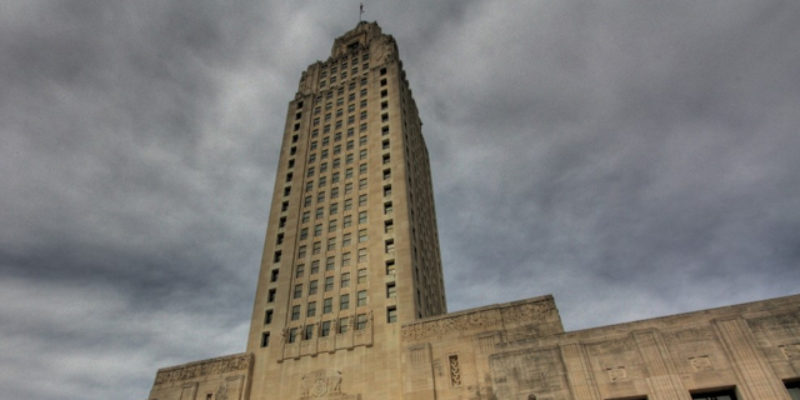It’s never not the time to discuss state tax rate relief in Louisiana. In fact, it may provide the way by which to get rid of counterproductive tax exceptions.
Increasingly both lawmakers and analysts have decried the presence of some of these on the books as sapping the state’s revenues for little beneficial impact. The trenchancy of this condition has accelerated as the state continues to fight its way past revenues over the past few years that struggled to keep up with escalating costs. Some lawmakers hope to deal with this issue in the upcoming legislative session, but the constitutional requirement of a two-thirds vote this year to disband these plus Gov. Bobby Jindal’s strong tendency to see these as tax increases the concept of which he doesn’t support makes that difficult. And as in 2016 constitutionally the Legislature cannot take up these items in a regular session that may push back reforms until 2017.
Yet a number of states lead by Republicans are looking to make tax cuts in this coming years. Fresh off of elections that in some cases brought them to power and in other cases increased their majorities – in some cases because they cut taxes – these states look to continue momentum in this direction, even if cautiously given that some states have budget environments not dissimilar to Louisiana’s.
Their lessons, added to those learned with the Pres. Ronald Reagan cuts at the national level in the early 1980s (even if partially undone in the latter part of the decade), should lead to three caveats in regard to the basic underlying theory: that diverting money from the less-efficient government sector to the more-efficient private sector produces economic growth reflected in tax revenues collected by government. The trick is to ensure that, over time, enough replacement revenues can be generated to fulfill genuine spending needs.
One condition is to know where the state’s tax rate rests on the “Laffer Curve,” which is a curvilinear function based upon revenue collected at a given tax rate. Simply, higher than a certain rate begins to depress total revenues because it leaves too little capital available in the private sector to create sufficient wealth to offset the money confiscated. Higher-tax states like California may be closer, if not past, the apogee of the curve, meaning tax cuts actually might produce more revenue or lose relatively little than with lower tax states.
Another is that this decision must be made in the context of what spending truly is needed in a state. Few, if any, states probably are on the right side of the curve, so even as increased private sector activity boosts revenues, they unlikely will match through this policy in isolation what is forgone in tax cuts. But if the state is spending superfluously on tasks that do not need to be performed by government, then those activities should be eliminated and no shortfall is created.
Finally, there must be recognition that while the decrease in revenues will happen overnight, the eventual regaining of at least some of them will take time to manifest. It’s easy to stop collecting but changes in productivity and investment patterns evolve only slowly. Thus, it takes political will and patience to see them through, also a good recipe for making spending cuts if need be.
Reviewing Louisiana’s situation, the opportunity for spending cuts seems minimal, given the relatively standstill budgets of the past few years that effectively have been balanced through improved efficiency and through small reductions to a handful of relatively unneeded tasks. This is not to say that more could not be done – the relative generosity of total compensation to state employees, both on the job and after leaving it, compared to those performing similar tasks in the private sector is an obvious starting point – but that the impact of those in terms of reducing spending would be felt significantly only down the road, and should not be counted upon for the short term.
Also, Louisiana’s income tax burden is below average among the states and therefore likely on the left side of the curve, meaning reductions should occur only when the budget is in better shape and/or gradually over time. This argues for revenue near-neutrality in any income tax cutting.
And points to the strategy to remove tax exceptions. Policy-makers could begin by, for example, phasing out, or even wiping out for next fiscal year, corporate income taxes, which at fewer than $300 million in FY 2013 hardly constitutes any more than the amount forgone with the wasteful, less-than-a-quarter-back-on-a-buck-spent motion picture investor tax credit estimated for that year in exchange for phasing or wiping out that credit. Throw in more such credits, and more rate reduction could be done and/or more quickly. Plus, there’s a bonus in tax simplification added to letting corporations keep more of what they earn that can be reinvested and/or released to the larger economy that reduces costs and makes even more capital available.
Eventually, comprehensive tax reform can improve matters further, but that should be a goal for the next governor and Legislature. But prior to their seating, this strategy of swapping exceptions for reduced rates is possible now because it overcomes political objections in an election year where many policy-makers look ahead to reelection or election to other future offices. These politicians should make a New Year’s resolution to undertake such actions.
Advertisement
Advertisement

